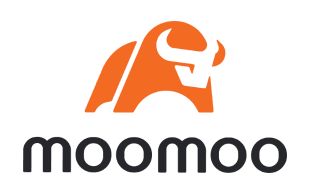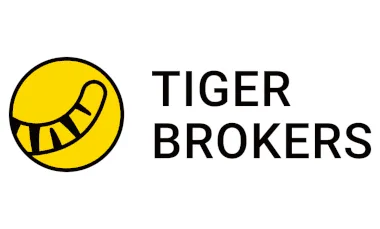Our top pick for
24/5 trading

Response | |
|---|---|
| No | 75.63% |
| Yes | 24.37% |
A diversified portfolio will be one that has multiple types of investments, rather than investing in a single asset or asset class.
For example, if you have all your money sitting in a savings account, you don't have a diversified portfolio.
Similarly, a property investor who owns numerous investment properties but doesn't have any other investments, doesn’t have a diversified investment portfolio.
While they may have a diversified property portfolio (if they invest in a range of different property types such as houses, apartments and land), they can't really be considered to be a diversified investor.
This is because they are only investing in a single asset class (in this case property).
Say an Australian investor has $200,000 in capital that they want to use to build a diversified portfolio. They might approach it in the following way.
Please note, this example is for illustrative purposes only and shouldn't be used to inform your own investment decisions.
This hypothetical portfolio would be invested across 3-4 asset classes that offer different risk profiles, and also is not exclusively exposed to the Australian economy.
The main benefit is that it minimises risk.
It's a "don't put all your eggs in one basket" approach to investing.
This is because in the unfortunate event that something were to happen to that basket, all your eggs – or money – would be gone.
If an investment class performs poorly over a certain period you will only lose money on your investments in that asset, rather than across your whole portfolio.
Let's say you only invested in shares in Australian companies.
Each time the Australian market fluctuates your entire investment portfolio would be affected. But, if only one-quarter of your portfolio was in shares then only one-quarter of your portfolio would be affected.
It's also of benefit to diversify your portfolio within particular asset classes. For example, if you’re investing in shares, investing in a range of different sectors and industries will further help minimise risk to your investment portfolio as a whole.
If your money is properly diversified, you generally aren’t concerned about what the market does on any particular day.
If small market fluctuations are keeping you up at night, this could be a sign that you have too much money invested in a particular asset class.
Investors with diversified portfolios are generally in it for the long term and are investing to create future wealth.
Non-diverse investors tend to invest a large pool of money into an asset for a short amount of time.
If you’re investing with the intention to sit tight for the next 20, 30 or 40 years, you will likely have a diversified portfolio.
Investors who don’t have a properly diversified portfolio are likely to get caught up chasing the next big investment opportunity. They might keep an eye out for shares that are underpriced with the intention to buy and sell and make a quick buck.
Diversified investors are usually more confident because they have a stable, well planned, long-term strategy.
The more asset classes you’re invested in, the more diversified your portfolio is, meaning it's also lower risk. If you have money invested in 2 or more of these asset classes, you have a diversified portfolio:
Our top pick for
24/5 trading

Our top pick for
Copy trading

Our top pick for
Mobile app

An ETF is a type of managed fund that is traded on the ASX like shares. The fund owns a range of assets including local and global shares, bonds, foreign currencies and commodities. The investor doesn't own these underlying assets but instead owns a portion of the entire ETF. So even if you only invest in ETFs, you automatically have a diversified portfolio.
For many investors, it could be tempting to put your money into 1 or 2 assets, especially if they are continuing to gain market share.
But if the price of that asset falls so does your overall wealth. Especially if they are in the same asset class.
Take for example owning shares in 2 of Australia's Big Four banks.
While an investor might say they own 2 different assets, they are likely to be impacted in the same way.
To diversify, an investor could put their money in a number of different stocks in a variety of asset classes.
In order to find out if your share portfolio is diversified you could look at whether or not your holdings are all in the same asset class.
There are 11 ASX categories: energy, materials, industrials, consumer discretionary, consumer staples, health care, financials, information technology, communication services, utilities and real estate.
If an investor wants to make sure they are diversified through shares they don't necessarily need to have assets in all of these categories but being in more than 1 or 2 can help.
The second option for investors is to put their money into other asset classes or even international shares. This can help offset potential issues in the Australian share market.
Yes it's theoretically possible for you to over-diversify, which will limit your upside.
Basically, if adding a new investment in your portfolio increases your portfolio's overall risk or lowers expected returns without the benefit of lowering risks, then it does not really serve your overall financial goals.
We currently don't have that product, but here are others to consider:
How we picked theseImportant: The standard brokerage fee displayed is the trade cost for new customers to purchase $1,000 of either Australian or US shares. Where a platform charges different fees for both US and Australian shares we show the lower of the two. Where both CHESS sponsored and custodian shares are offered, we display the cheapest option.
Finding a platform with an auto-invest feature is key if you want to dollar cost average into the market.
Webull is a broker with zero-commission trading and a suite of tools to help you invest.
We used Finder's proprietary algorithm to find Australian-listed companies that have strong fundamentals and have a share price under $5.
Best performers included Sunrise Energy Metals, Leeuwin Metals and Duketon Mining.
Trade ASX stocks and ETFs with a $2 brokerage fee and a low minimum investment of just $10.
Index funds are a hot topic right now, but how do you actually invest in them?
An online portfolio tracker will help you manage your share investments and track the performance of your portfolio effectively.
Join the world’s largest social trading network and learn from experienced forex traders with eToro Australia.
Compare share trading apps to find out which app has all the tools and resources you need to reach your investment goals.
Find out what tax deductions you're entitled to if you’re a share trader or an investor.